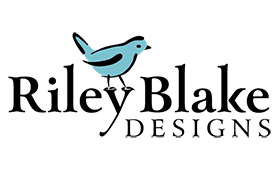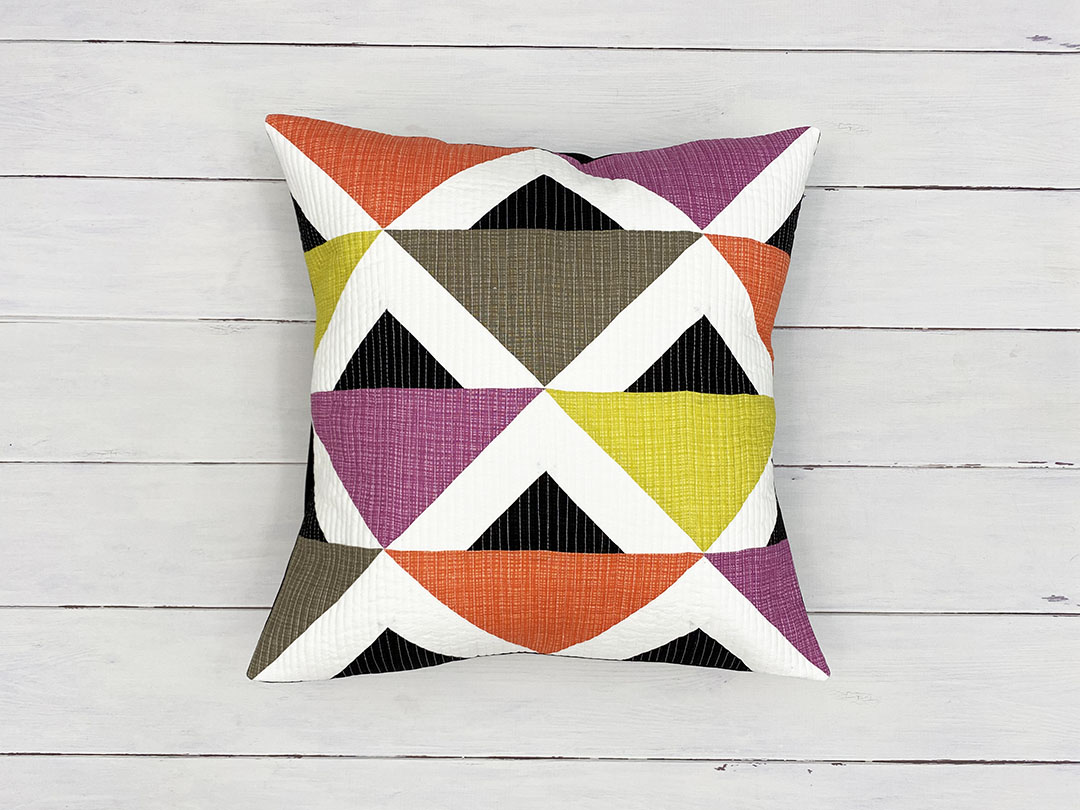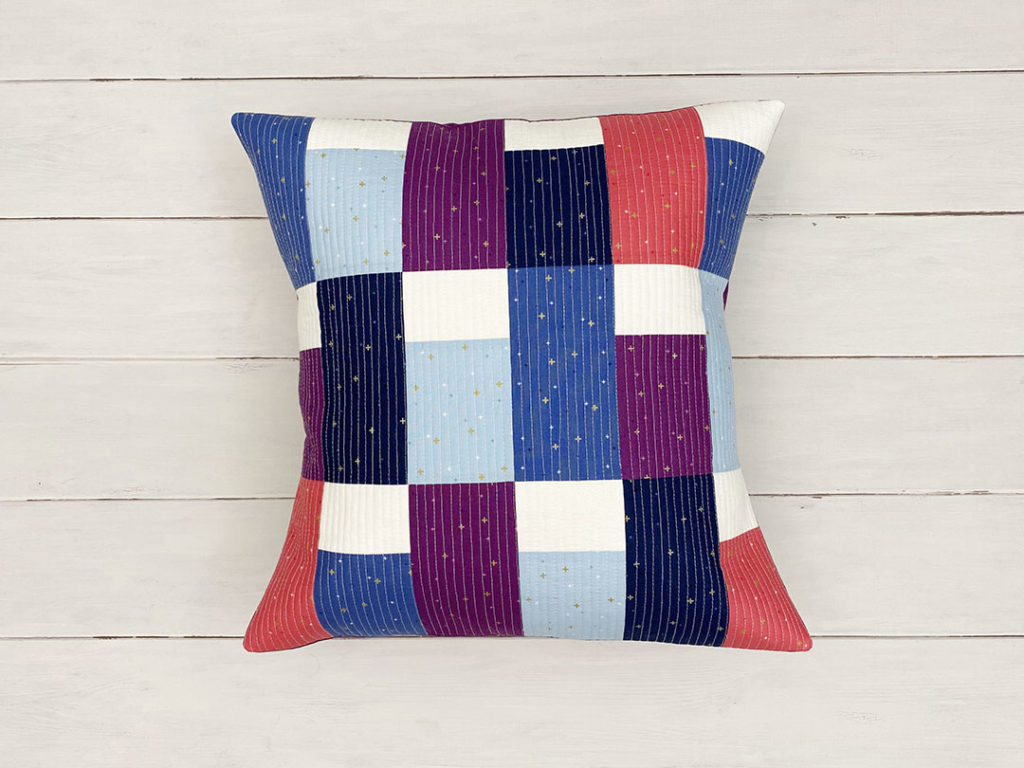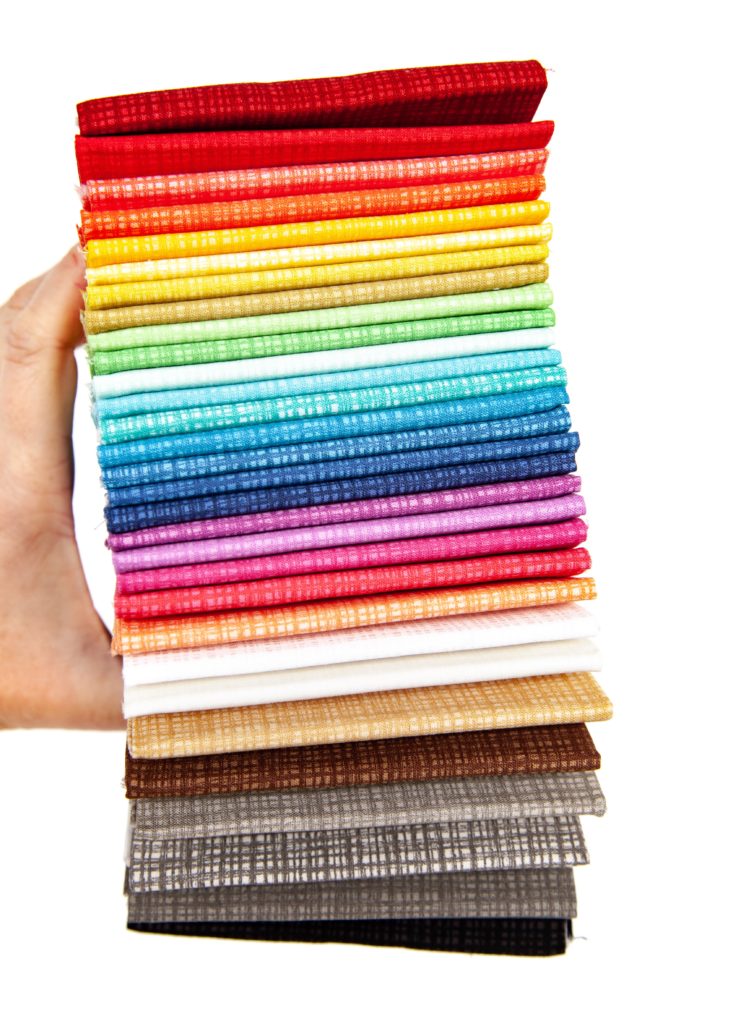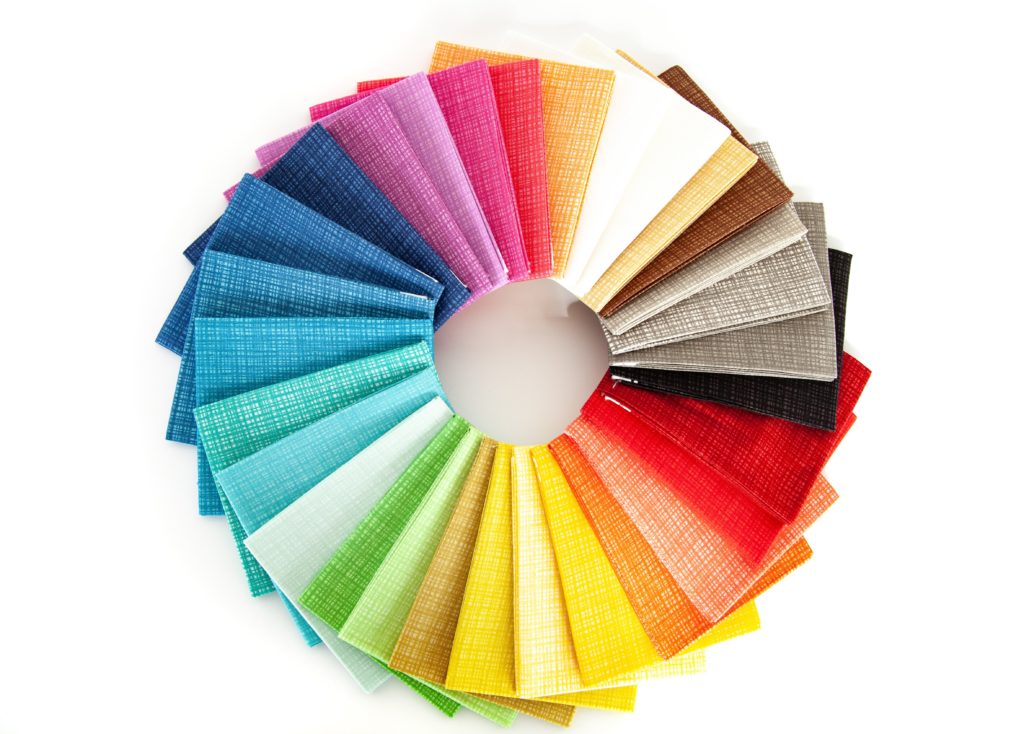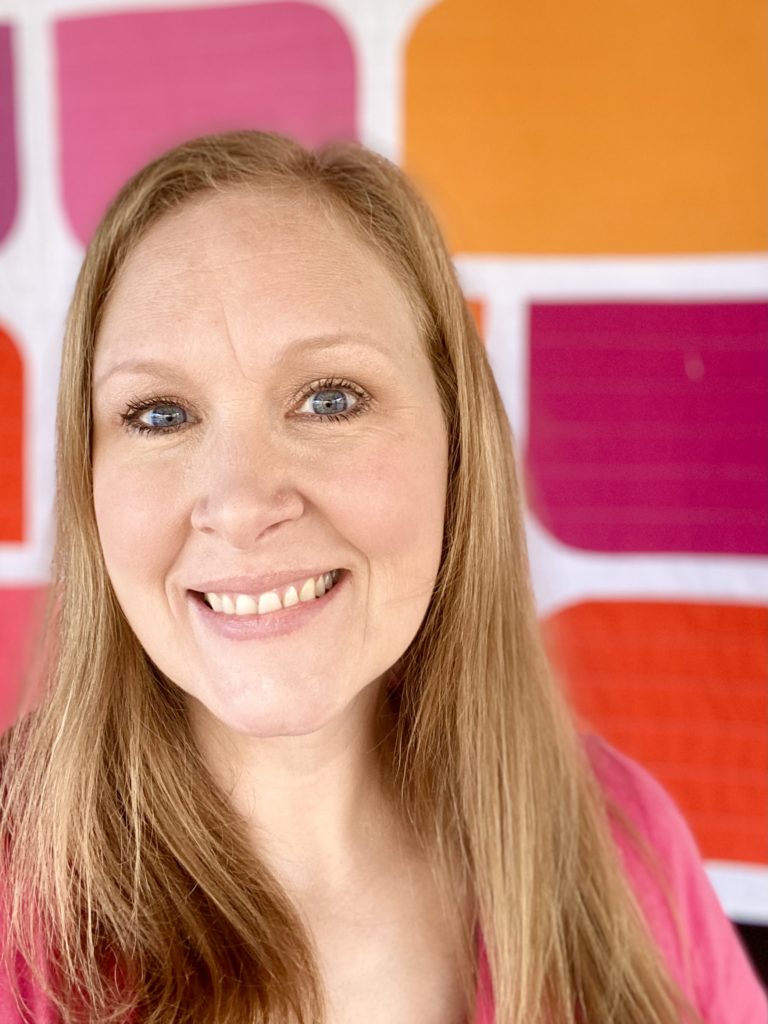It’s Jamie again from Sew Brainy Designs and I’m back with my 2022 Make it Modern Pillows series! This year I’m bringing you some fresh and bold modern quilt blocks that were designed specifically to be 18″ pillows! They are quick and easy, plus they’re a good way to bust your scrap stash or show off that designer RBD fabric that you love!
In case you missed it, September’s pillow used the Texture line and is a fun play on simple stripes. You can get that tutorial below!
October’s pillow uses some triangles to make a cool geometric pattern. Funny story… I accidentally photographed this upside down. The black triangles are supposed to be facing upwards…oops! It actually looks good both ways though!

Since it’s October, I absolutely had to go with spooky season colors for this one! That bright Citron color is one of my favorites!

The black triangles look kind of like spooky eyes! But the whole thing actually has a scales vibe too.
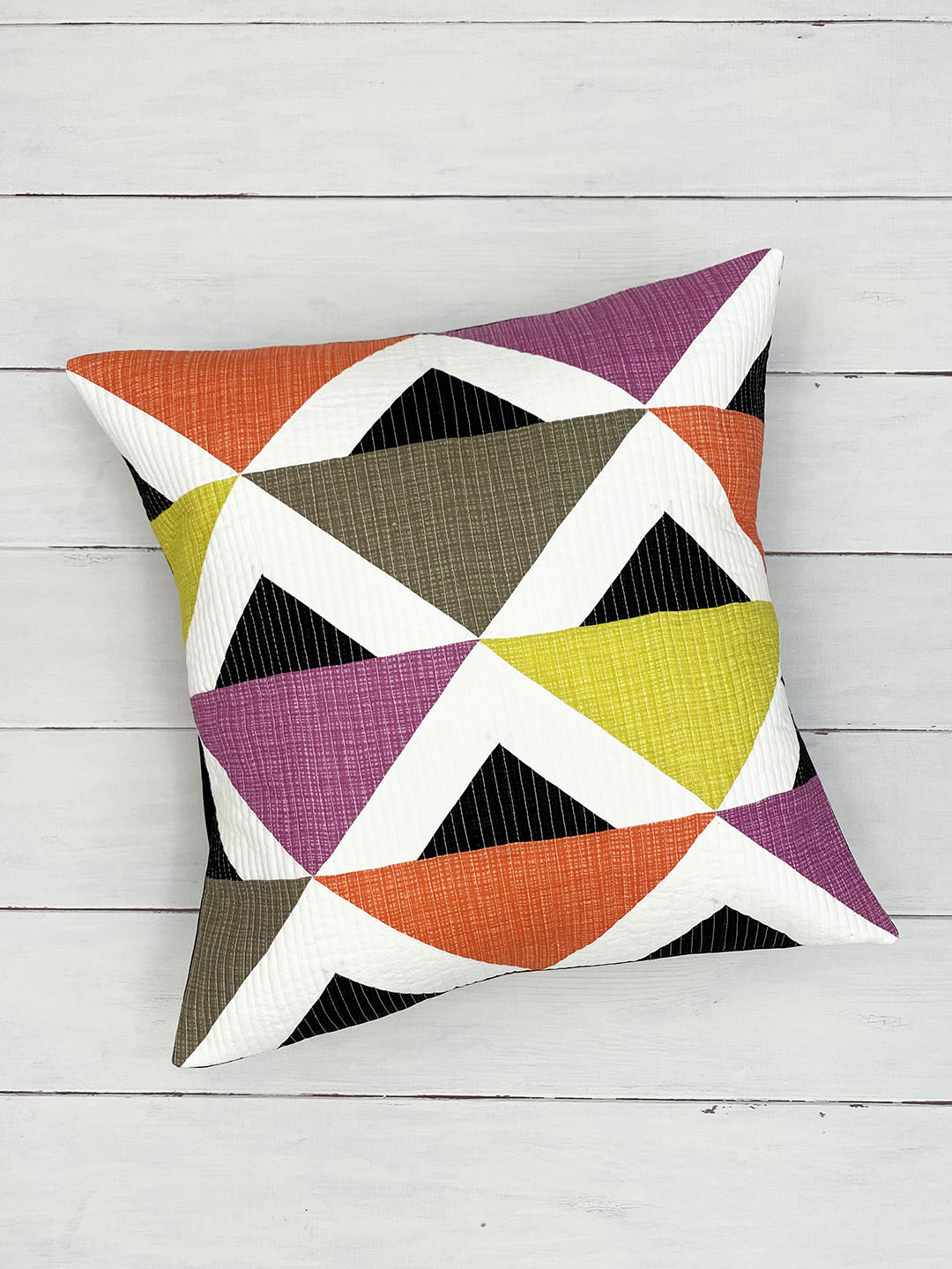
Here’s my usual matchstick quilting design using Aurifil 50wt. white thread.
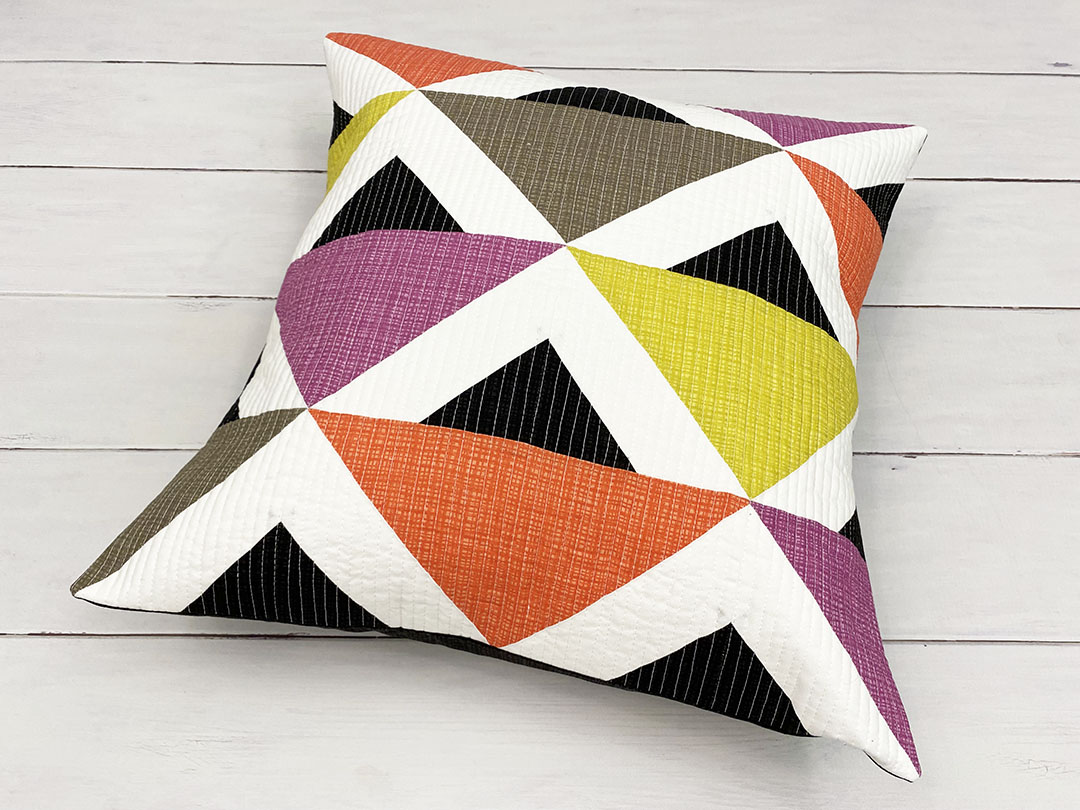
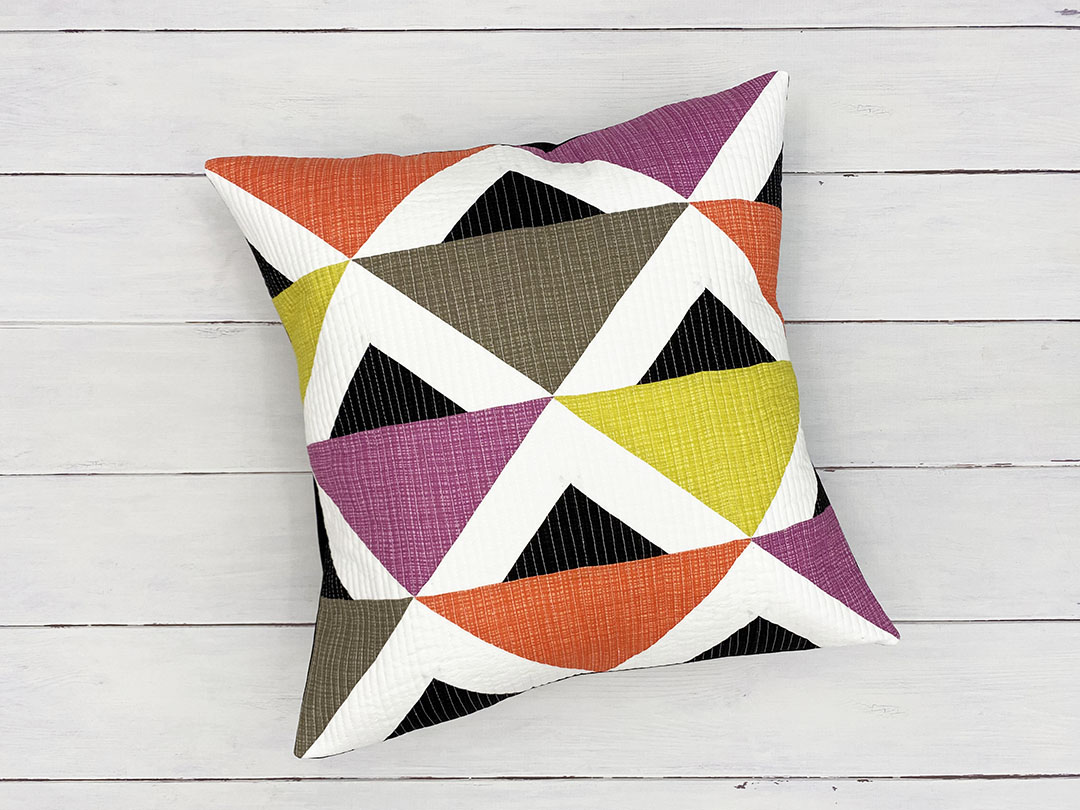
This month’s pillow features the RBD Basics collection Texture by Sandy Gervais. I love this collection because it reads as a solid but it gives a nice burlap texture to the fabric. The colors I used (in order from left to right) were Overcast, Orchid, Black, Citron, and Orange.
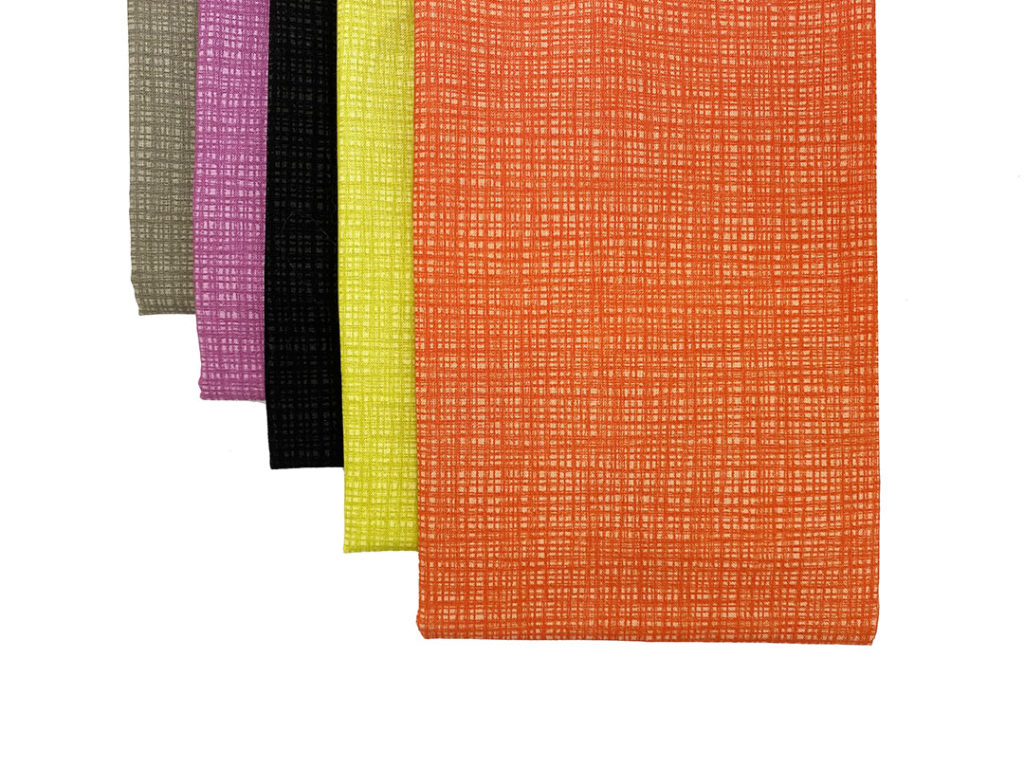
And there are so many great colors of the Texture line to choose from…plus a few new ones are coming out this year! Seriously one of my favorite basics!
Now let’s make a pillow!
October Pillow Tutorial
Pattern Notes
- Please read through all instructions before beginning.
- Seam allowances are 1/4″ unless specified.
- WOF = Width of Fabric; pattern assumes yardage is a minimum of 42″
- RST = Right sides together
- Press all seams open (or in preferred direction) unless specified.
- Fat Quarter Precut (FQ) = 18″ × 21″
- Fat Eighth Precut = 9″ × 21″
Material Requirements
For the block (pillow top):
This pattern uses (1) background fabric [FABRIC A] and (5) accent fabrics [FABRICS B-F]. Below are the requirements to make ONE 18″ block.
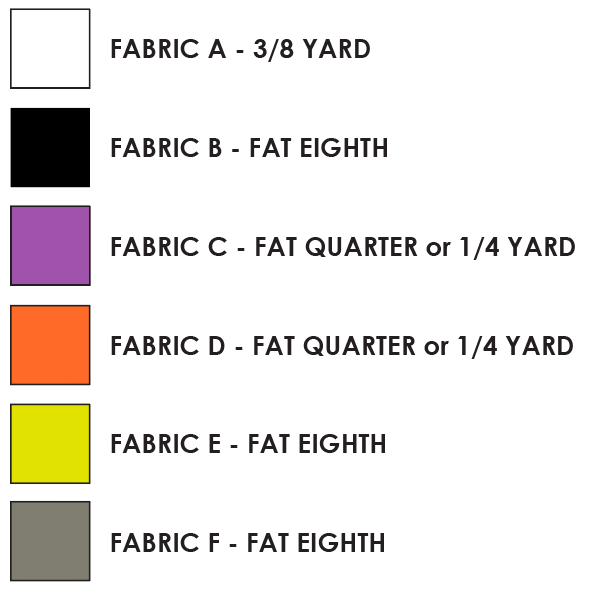
For the pillow body:
- (1) 22-24″ square piece of muslin or other fabric (for quilting the top)
- (1) 22-24″ square piece of batting (for quilting the top)
- (2) 13″ × 18½” pieces of backing fabric (for the pillow envelope)
- (1) 20″ pillow form (my favorite one to use is the FJÄDRAR from IKEA!)
Cutting Directions
Cut the fabric below in the specified order and label each cut with the letter/number in the [bracket].
From FABRIC A, cut:
- (2) 5½” squares [A2]
- (12) 5″ squares [A1]
From FABRIC B cut:
- (16) 2¾” squares [B1]
From FABRIC C and D:
- (2) 5″ × 9½” [C1, D1]
- (1) 5½” squares [C2, D2]
From FABRIC E and F:
- (1) 5″ × 9½” [E1, F1]
- (1) 5½” squares [E2, F2]
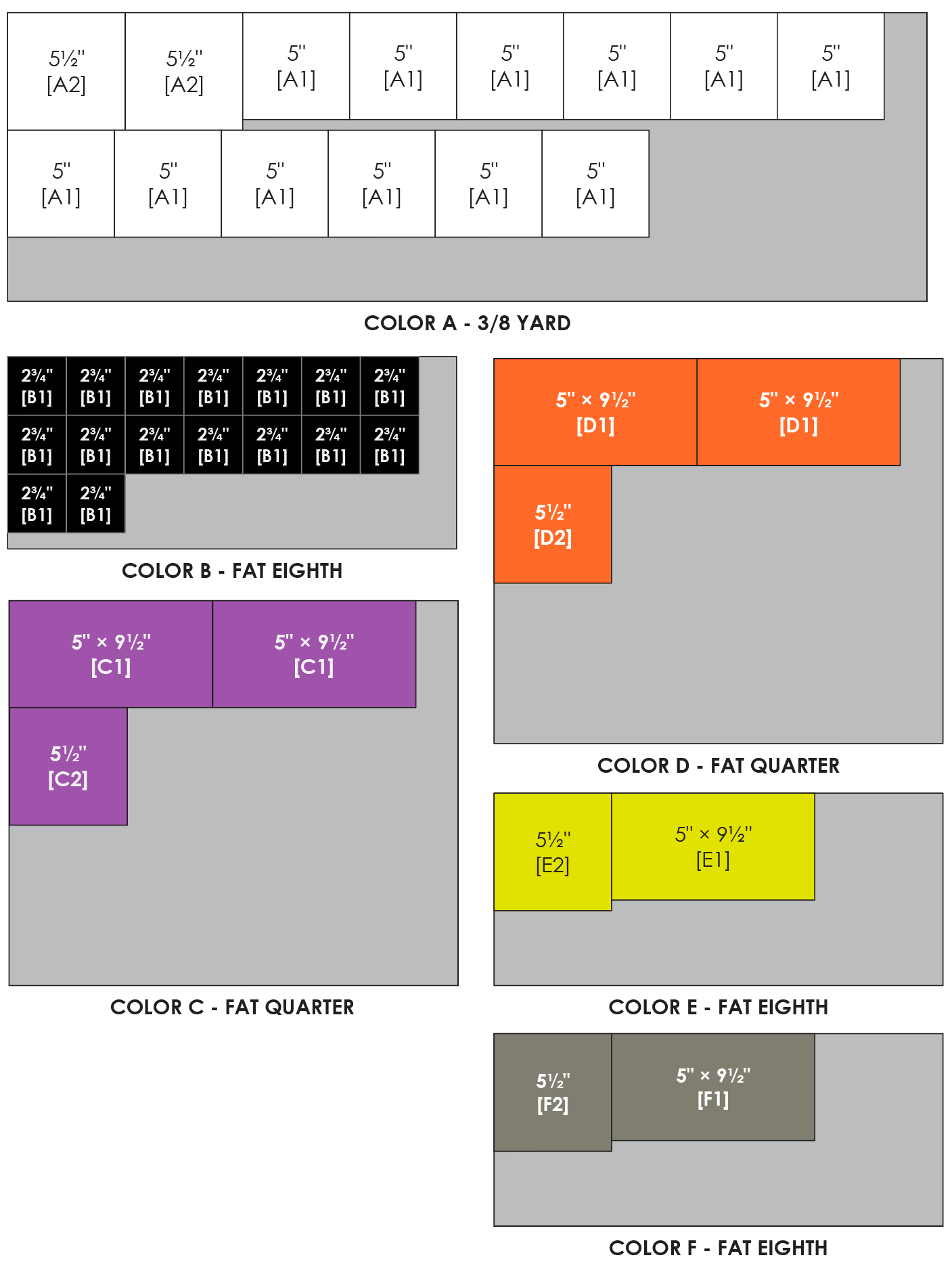
Piecing Directions
1. Before beginning, prepare all (12) 5” A1 squares and (16) 2¾” B1 squares by marking a diagonal line on the wrong side of the fabric from one corner to the opposite corner using a fabric marking tool.
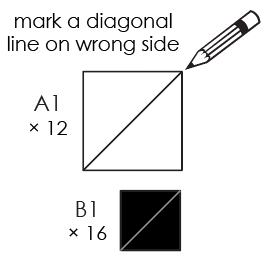
2. Starting with the (6) 5″ × 9½” FABRIC C-F rectangles, you will be using the (12) 5” A1 squares to create one-at-a-time FLYING GEESE units using the “Stitch and Flip” method.
Pair (1) A1 square RST on the left side of (1) E1 rectangle as shown below, noting the position of the marked line. Stitch on the line, trim 1/4″ on the outside of the line, flip the triangle over, and press seam.

Now pair (1) A1 square on right side of the unit as shown below, noting the position of the marked line. Stitch on the line, trim 1/4″ on the outside of the line, flip the triangle over, and press seam. If needed, trim the block to 5″ × 9½”.

3. Repeat STEP 2 using the (5) remaining C1, D1, F1 rectangles and (10) A1 squares to make FLYING GEESE units in the combinations below.

4. Starting with the (6) FLYING GEESE units from STEPS 2-3, you will be using (12) 2¾” B1 squares to create smaller triangles on the outside corners using the “Stitch and Flip” method.
Pair (1) B1 square on the bottom left corner of the E1/A1 unit as shown below, noting the position of the marked line. Stitch on the line, trim 1/4″ on the outside of the line, flip the triangle over, and press seam.

Now pair (1) B1 square on bottom right side of the unit as shown below, noting the position of the marked line. Stitch on the line, trim 1/4″ on the outside of the line, flip the triangle over, and press seam. If needed, trim the block to 5″ × 9½”.

5. Repeat STEP 4 using the (5) remaining FLYING GEESE units and (10) B1 squares in the combinations below.

6. Cut the (6) 5½” A2/C2/D2/E2/F2 squares in half diagonally from one corner to another. You will discard ONE triangle of from C2, D2, E2, and F2 as only one is needed for the next step. NOTE – if using directional fabric, check the final layout to determine what direction to cut and which pieces to keep to achieve desired look.

7. Sew (1) C2 triangle and (1) A2 triangle together RST to create ONE HST unit. Press seams and trim to 5″ square.

8. Repeat STEP 7 to create THREE additional HST units in the combinations below.
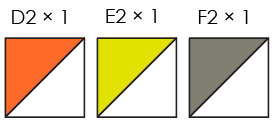
9. Starting with the HST units from STEPS 7-8, you will be using (1) 2¾” B1 square to create a triangle on the A2 (white) corner using the “Stitch and Flip” method.
Pair (1) B1 square RST on (1) A2/C2 HST as shown below, noting the position of the marked line. Stitch on the line, trim 1/4″ on the outside of the line, flip the triangle over, and press seam.

10. Repeat STEP 9 to create THREE additional HST/B1 triangle units in the combinations below.
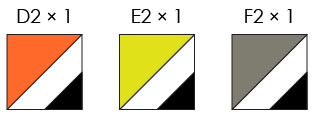
11. Lay out all HST and FLYING GEESE units into FOUR rows as show below. Sew the THREE units in each row together, paying attention to correctly match the seams of the B1 (black) fabric pieces together.
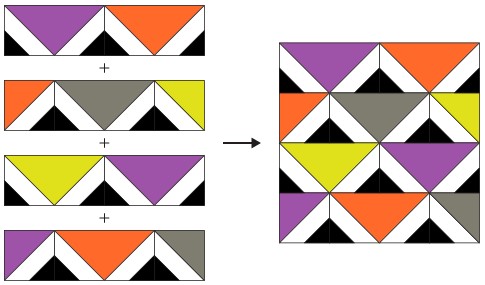
12. Sew the FOUR rows together. Press seams.
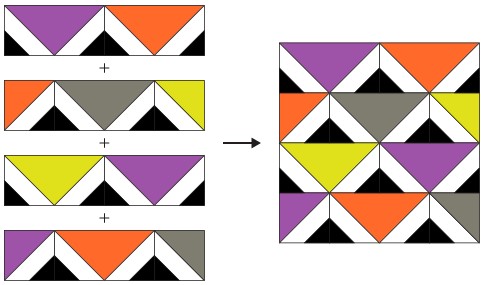
13. Your block is now complete!
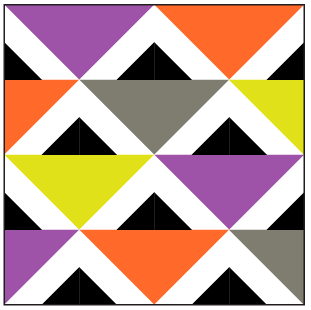
14. Layer the completed block on top of the 22-24″ batting and muslin squares and quilt the pillow top as desired. When you are done, trim the block to 18½”.
Note – if you add dense quilting like I did, your top may shrink a bit in size. Just trim it to the largest square that you can. You can trim the width of envelope backing fabric a bit in the next step if needed in order to match your actual top size.
15. Create a finished edge on the long side of each of the (2) 13″ × 18½” pieces of envelope backing by folding 1/2″ of fabric over the wrong side TWICE. Stitch a seam near the edge to secure it. Again, I photographed it upside down. Whoops!
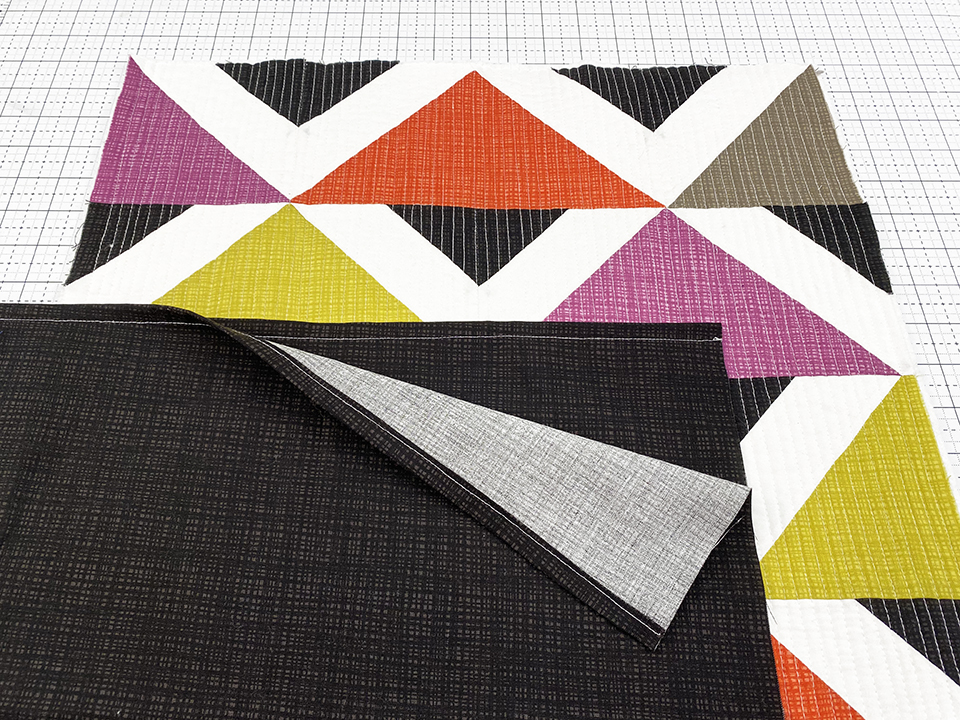
16. With the square top facing up, layer the envelope pieces RST on top of it as shown below and sew a 3/8″ seam around the edge of the pillow top.
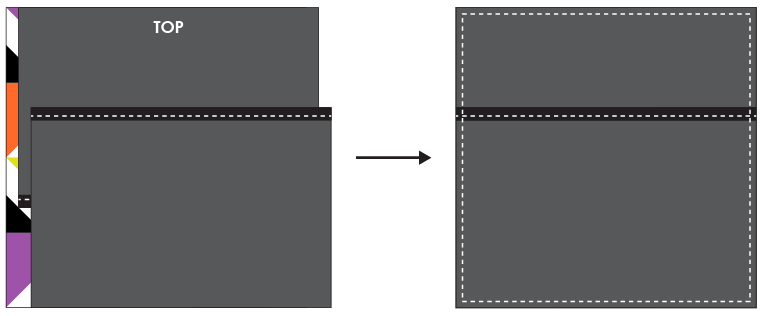
17. Trim the edges of the corners a bit to reduce bulk. Turn the pillow case inside out and insert your pillow form. Your pillow is now done! Enjoy your fun modern make!
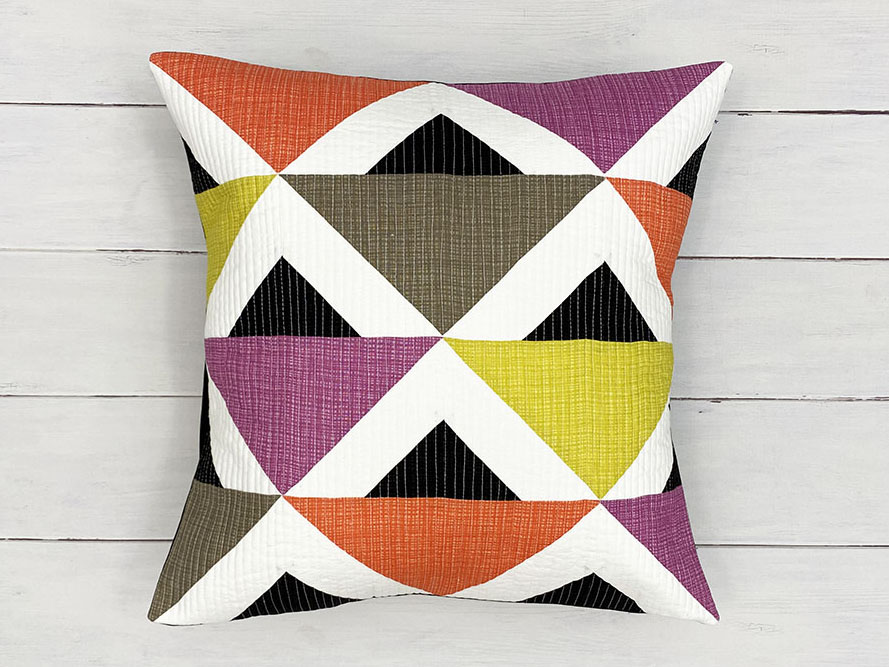
I can’t wait to see all the beautiful pillows everyone makes! They can be very addicting! Be sure to share them on social media! #makeitmodernpillows #iloverileyblake #sewbrainydesigns.
I’m also working on a 5-color version of all my blocks to make a sampler quilt. You can check out that post HERE on my blog. I’ll see you in July with some Blossom fabric and some squares!
Until later, happy quilting!
Jamie
